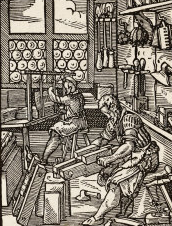Visions de la ville dans Sex and the City : topographie et typographie de l’excès
Keywords:
Identités, féminisme, post-féminisme, postmodernisme, urbanitéAbstract
Postféministe, postmoderne et transgenre, la série américaine Sex and the City est un hommage à l’excès, à l’hybridation et au mélange des genres, dans son double sens de rapport social de sexe et de genre littéraire, télévisuel et cinématographique. La ville de New York et le quartier de Manhattan sont les espaces topographique et typographique de l’excès. Non pas labyrinthe, la ville est un lieu-frontière qui met en relief l’étroite relation entre géographie spatiale et géographie psychosociologique. C’est l’espace où s’impriment, s’écrivent et se réécrivent les caractères du récit et du métarécit et les identités, moins fragmentaires que plastiques, des characters féminins et masculins. L’étude des espaces physiques et mentaux, des habitus des personnages et de la trame narrative et méta-narrative où foisonnent les références intertextuelles et intermédiatiques – éléments qui contribuent à l’oscillation entre extérieur et intérieur, entre privé et public, et entre spectaculaire et spéculaire – permettent d’analyser la ville et ses débordements en tous genres (agapes, excentricités vestimentaires, outrances langagières, prégnance des stéréotypes) comme un moyen de dépasser et de repenser les frontières spatiales, sociales, sexuelles et génériques, et de voir l’excès comme « accès à ». Dans Sex and the City, la ville marque l’avènement de l’ère hypermoderne et porte au pinacle la plasticité d’individualités qui échappent à toute catégorisation et s’octroient à loisir le droit de s’évader (evadere : « se sauver de » mais aussi « aboutir à être »).
Sex and the City is a postfeminist, postmodern, and cross-gender TV series that pays tribute to excess, taken as a mixture of styles and gender blending. New York City and Manhattan are the topographical and typographical loci of excess. A frontier rather than a labyrinth, the city enhances the close connection between geographic and psycho-sociological spaces and has to be tackled as a backdrop on which the characters of the narrative and meta-narrative as well as the masculine and feminine characters are printed, imprinted, and “impressed.” The study of the outer and inner spaces, of the social mores, sartorial stances, and food habits of the characters, coupled with that of the textual and meta-textual frame of the narrative which abounds in intertextual and intercultural references enable one to analyze the city and its excesses as means to play down – and go beyond – the line that usually separates social, sexual, and gender groups. In Sex and the City, excess is “access to,” and the urban space celebrates the advent of hypermodernity and the era of dynamic individuals who avoid stereotyping and indulge themselves in the art of escaping.
Published
Issue
Section
License
- Work submitted for publication must be original, previously unpublished, and not under consideration for publication elsewhere. If previously published figures, tables, or parts of text are to be included, the copyright-holder's permission must have been obtained prior to submission.
- Authors of accepted manuscripts will assign to L'Atelier the right to electronically distribute their article, or publish it in any form (Internet, CD ROM, printed copy) but authors will retain copyright and, after the article has appeared in L'Atelier, authors may republish their text (in print and/or electronic form) as long as they clearly acknowledge L'Atelier as the original publisher.


